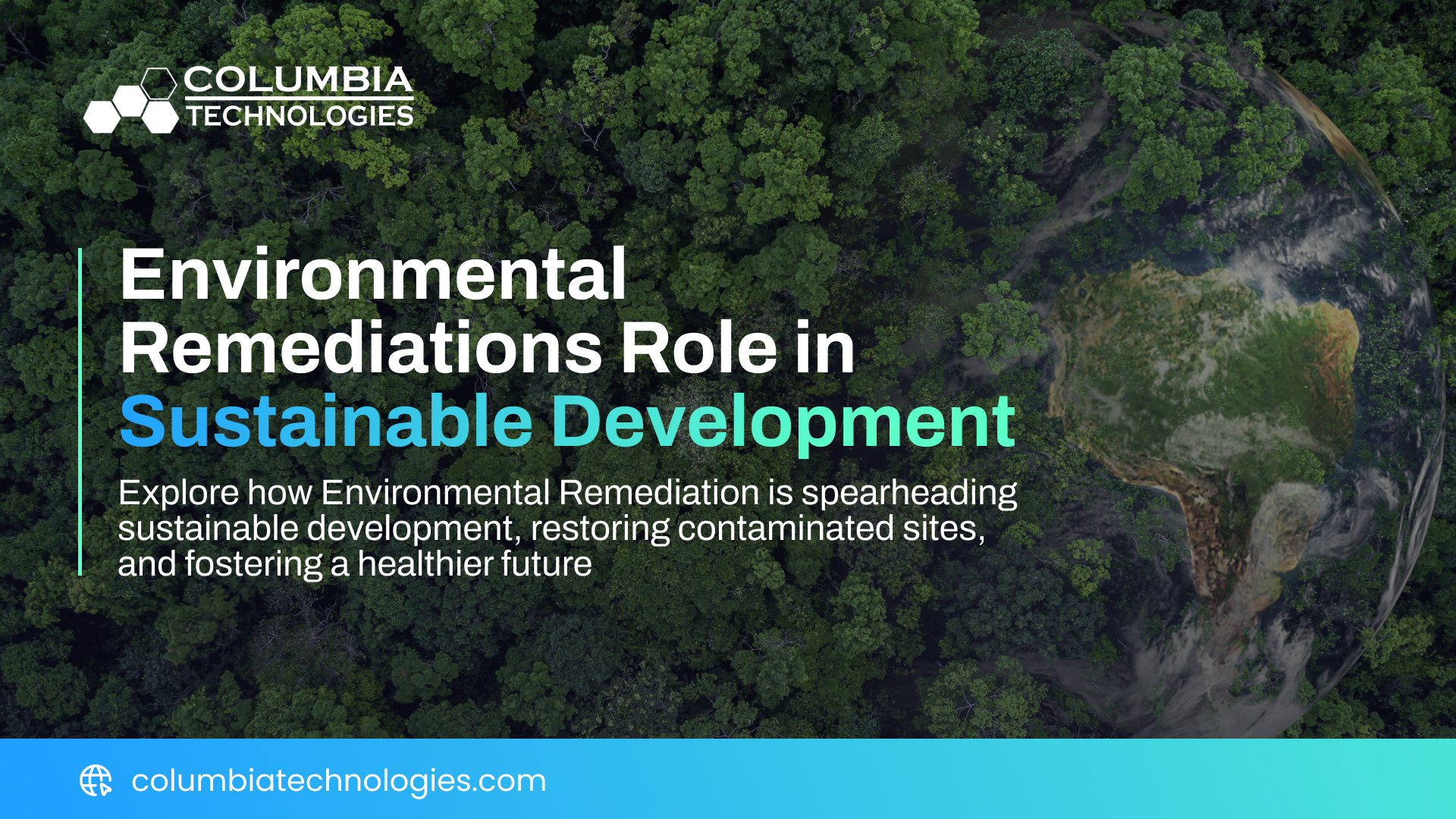Explore how Environmental Remediation is spearheading sustainable development, restoring contaminated sites, and fostering a healthier future.
The Importance of Environmental Remediation
Environmental remediation proves crucial in fostering a healthier environment. By removing toxins, it mitigates health hazards and bolsters the well-being of all living organisms.
The process importantly bolsters ecosystem recovery. Purging residual contaminants from long-term pollution sources, like the contaminated UST site in Auburn, Alabama, delivers new opportunities for ecosystems to rebound and flourish.
Understanding the Concept of Environmental Remediation
Environmental remediation operates on core principles of containment, treatment, disposal, and resource recovery aimed at rehabilitating contaminated sites for the welfare of ecosystems and communities. Such principles ensure efficient, effective, and sustainable solutions to environmental pollution issues.
Through Environmental Remediation, Columbia Technologies is promising a bright future for Auburn by rehabilitating its longstanding polluted sites with comprehensive, efficient, and sustainable solutions.
From concept to implementation, the remediation process begins with a thorough assessment of the contamination extent, followed by the careful selection of appropriate remediation technology. This phase allows for a comprehensive, eco-friendly, and sustainable approach to achieve the ultimate goal - environmental restoration.
Why Sustainable Development Relies on Environmental Remediation
Environmental remediation reduces pollutants, reclaiming lands previously deemed unfit for use. This lays a clean foundation, vital for sustainable growth, as it prevents future harm and fosters positive environmental stewardship.
Sustainability and remediation are intertwined. Conservation efforts ensure future resource availability by relying on remediation to clear contaminants and heal the environment. It's a synergistic relationship, safeguarding our planet’s resources for generations.
Environmental Challenges and Remediation Strategies
With its unrelenting commitment to environmental remediation, Columbia Technologies laid the foundation to conquer the long-standing environmental hurdles at the former construction company's site in Auburn, Alabama. Through dynamic remediation strategies that encompass practicality and technology, they are transforming liabilities into rewarding opportunities.
Columbia Technologies is addressing major environmental problems through remediation, transforming previously contaminated lands into ecologically balanced environments, and offering a beacon of hope for a more sustainable future. Their work showcases how remediation is vital to sustainable development and overall ecological health.
Identifying Common Environmental Challenges
Our environment faces multifaceted challenges that scale from localized to global level. Detailed assessment and an understanding of these challenges serve as the foundation for developing effective remediation plans and strategies.
- Land degradation from industrial activities
- Soil contamination from untreated waste disposal
- Groundwater and surface water pollution from harmful effluents
- Air pollution due to unregulated emissions
- Destruction of habitats affecting biodiversity
- Global issues like climate change and ozone depletion
Exploring Different Approaches to Remediation
Differentiating between varieties of environmental remediation is crucial in addressing the unique challenges of each site. The type of remediation selected significantly influences the course of environmental sustainability.
- Traditional Excavation and Disposal: The contaminated soils are excavated and transported to a secure landfill or treatment facility.
- In-Situ Chemical Treatment: Chemical solutions are injected into the contaminated site to detoxify pollutants, breaking down hazardous substances into harmless matter.
- Bioremediation: Using living organisms, especially microorganisms, to consume and break down pollutants.
- Thermal Desorption: Using heat to increase the volatility of contaminants so they can be removed from the soil or groundwater.
- Phytoremediation: Using green plants to extract, stabilize, and eliminate contaminants in the soil and groundwater.
The Benefits of Sustainable Development through Environmental Remediation
As vehicles of change, environmental remediation programs fuel the engine of sustainable development, transforming legacy blight into vibrant, liveable spaces. These programs underscore the delicate equilibrium between growth and preservation, pivotal in maturing a future-minded urban landscape.
Sustainable remediation harmonizes economic progress with ecological conservancy, rendering impressive benefits. From enhancing public health and safety and safeguarding natural resources to fortifying ecosystem resilience, it converges man-made and natural environments into a symbiotic nexus.
Preserving Natural Resources
The practice of environmental remediation inherently supports sustainability by conserving natural resources. By restoring contaminated sites, we contribute to replenishing precious natural reserves, promoting a more resourceful and prosperous world.
- Amplifying Nature's Potential: Through precise environmental remediation strategies, Columbia Technologies helps amplify nature's potential, conserving resources instead of exploiting them.
- The Power of Preservation: Rather than continually depleting resources, Columbia Technologies emphasizes preservation, highlighting how a sustained response can reduce environmental impact and aid in recovery.
Enhancing Ecosystem Resilience
Environmental remediation acts as a powerful tool in building resilient ecosystems. Resolving contamination issues it restores stability, ensuring that natural environments can thrive. It even fosters biodiversity, which fortifies ecological balance and durability.
The connection between ecosystem robustness and remediation is undeniable. Remediation, by removing harmful substances, allows ecosystems to regain their innate vigor. As these spaces are rehabilitated, they can better withstand environmental challenges and disruptions.
Reinforcing ecosystem resilience also supports other sustainment goals. As remediation efforts revive damaged environments, they also elevate their capacity to absorb and recover from future stressors. In essence, the robust health of these ecosystems mirrors our planet's overall wellness.
Successful Case Studies
In Alabama, the former site of a construction company in Auburn has seen remarkable transformation under Columbia Technologies’ remediation program. Significant remediation efforts led to the successful transformation of contamination, an essential step towards sustainable redevelopment in the area.
Another notable instance of environmental rehabilitation is seen in the Midwest, witnessing the turnaround of several neglected industrial sites into productive spaces. The success manifests the power of environmental remediation in enabling sustainable development while safeguarding community health and ecosystem wellbeing.
Revitalizing Contaminated Industrial Sites
Highlighting the role of innovative solutions, Columbia Technologies' remediation process efficiently converted a once-contaminated industrial site in Auburn into an environmentally friendly complex. This remarkable transformation signifies the potential latent in environmental remediation for industrial areas.
The heart of Columbia Technologies' approach lay beneath the surface - literally. Through high-tech soil and groundwater cleanup processes, long-term polluted underground storage tank sites are given a new revolutionary lease of life, paving the way for future sustainable developments.
This inspiring case study of Auburn provides a blueprint that is applicable globally. Columbia Technologies' successful rehabilitation redefines the narrative of industries being solely polluters, reshaping it to one where they are key fighters in environmental conservation.
Restoring Ecologically Sensitive Areas
In one moving example of restoration, protective measures led to the resurgence of life in previously degraded habitats. This refreshing journey was marked by improved soil quality, flourishing biodiversity, and renewed habitats, showcasing the undeniable benefits of remediation in reviving ecologically fragile sites.
Columbia Technologies illuminated the transformative power of ecological restoration through remediation. Harnessing advanced technologies, this major step aimed to nurture nature back to its robust state, strongly underlining the importance of remediation in sustainable development.
Through the restoration of these fragile areas, a commitment to a brighter, safer environmental future is evident. The initiatives by Columbia Technologies have proven how effective remediation can bolster ecological resilience and uphold the integrity of our precious ecosystems, one restored location at a time.
The Future of Environmental Remediation and Sustainable Development
Environmental remediation stands as a beacon of hope, shaping a sustainable future by addressing and rectifying the harmful legacies of the past. It pledges a healthier planet and secured resources for generations to come.
Pioneering change is a reality, thanks to environmental remediation. Solutions devised today positively influence future sustainability, creating a ripple effect that promises a greener, cleaner existence.
- The promise of a resilient ecosystem free from harmful pollutants
- Assurance of planned growth without jeopardizing environmental quality
- Preservation of natural resources and biodiversity for future generations
- Commitment to public safety by safeguarding against potentially hazardous situations
About the Author
John Sohl is the CEO of Columbia Technologies and a leading expert in High-Resolution Site Characterization and environmental safety. With a broad portfolio of global clients and numerous successful remediation projects, John specializes in transforming complex environmental data into actionable insights. This approach has led to the development of innovative technologies such as SmartData Solutions®, significantly optimizing the efficiency of environmental clean-up efforts. His continuous mission is to merge business growth with sustainable environmental practices, shaping a future where both can thrive simultaneously.
For more information or to learn how COLUMBIA Technologies can support your long-term management of environmental liabilities, Click Here.



